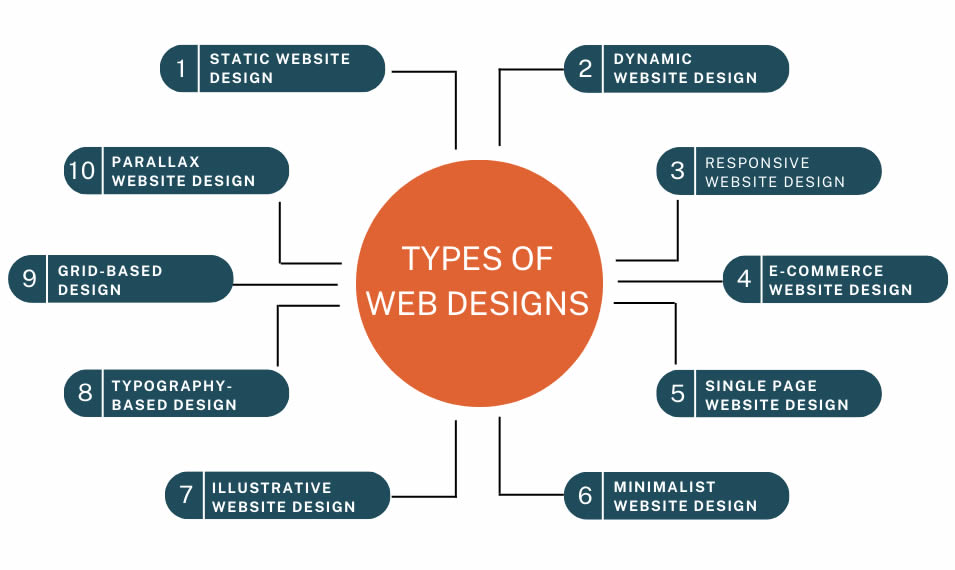Why Web Design Is Crucial for Building a Strong Online Presence
Why Web Design Is Crucial for Building a Strong Online Presence
Blog Article
Just How Effective Website Design Can Boost Individual Experience and Conversions
In the progressively affordable digital landscape, effective internet design plays an essential role in enhancing customer experience and driving conversions. As we check out the essential elements that add to successful web design, it becomes evident that the influence on customer contentment and conversion prices is profound.
Importance of User-Centric Design
In the world of internet design, prioritizing user-centric style is extremely important for producing reliable digital experiences. This strategy concentrates on understanding the requirements, preferences, and actions of individuals, making certain that digital interfaces are available and user-friendly (Web design). By integrating individual feedback right into the style process, web developers can craft experiences that resonate with their target market, eventually bring about boosted engagement and contentment
User-centric layout emphasizes usability, which is necessary for reducing and retaining individuals bounce prices. When customers can browse a web site effortlessly, they are extra likely to discover its material and transform right into clients.

Crucial Element of Reliable Format
Effective design works as the foundation of user-centric internet layout, translating individual needs into visual frameworks that facilitate interaction. An efficient design focuses on web content via a clear power structure, directing users' eyes to necessary details initially. This hierarchy is typically established using size, shade, and spacing, ensuring that important components attract attention.
An additional trick component is making use of whitespace, which stops overcrowding and enhances readability. Web design. Whitespace allows elements to take a breath, making the overall style show up cleaner and easier to navigate. Additionally, uniformity in design elements, such as typefaces and colors, fosters familiarity and depend on, making it possible for customers to navigate the website with greater simplicity
Grid systems can likewise be indispensable, supplying a framework that aligns material logically and visually. This positioning improves the customer experience by creating an organized visual flow. Flexibility in format-- like receptive style-- guarantees that internet sites carry out well across numerous devices, catering to diverse user choices.
Ultimately, an efficient format not only astounds users but likewise urges them to engage more deeply, inevitably driving conversions and fulfilling service goals. By focusing on these crucial elements, designers can produce formats that reverberate with users and enhance their general experience.
Navigational Ideal Practices
Clear and user-friendly navigating is critical for improving customer experience on a site. A well-structured navigation system enables individuals to discover info promptly, which straight influences their satisfaction and possibility of conversion - Web design. Implementing a hierarchical structure is important; use groups and subcategories that logically group related web content, making it less complicated for site visitors to discover
Uniformity in navigating components is also important. Make sure that buttons, menus, and links maintain uniformity in style, shade, and positioning across all web pages, offering individuals with a familiar structure as they navigate. In addition, use descriptive tags for navigation items. Instead of common terms, go with clear tags that properly reflect the content, assisting individuals in making informed choices.

Mobile Responsiveness and Access

Availability, on the various other hand, concentrates on making internet sites functional for individuals with disabilities. This consists of adhering to standards such as the Web Web Content Access Standards (WCAG), which address problems like shade contrast, text size, and keyboard navigating. By implementing these criteria, web designers can develop inclusive experiences that provide to a more comprehensive audience, thereby improving user involvement and satisfaction.
Additionally, mobile responsiveness and access not only improve customer experience however likewise positively impact search engine positions. Online search engine prioritize mobile-friendly and accessible internet sites, making them most likely to appear in relevant search results. Investing in these aspects of web design not only satisfies user demands yet additionally adds to overall company success with enhanced visibility and improved conversion prices.
Gauging Success Through Analytics
Tracking user communications and actions via analytics is vital for assessing the success of a website. By leveraging devices such as Google Analytics, organizations can collect essential data that reveals just how users involve with their website. Metrics such as bounce prices, typical session duration, and conversion prices supply insights into user actions and can highlight locations for enhancement.
Comprehending customer demographics and website traffic resources even more enhances a website's effectiveness. This information enables web developers to customize material and design elements to much better satisfy the demands of their target market. Furthermore, tracking specific customer journeys assists identify potential traffic jams in the conversion funnel, enabling businesses to optimize their website design as necessary.
Routinely assessing this analytics information is crucial for continuous renovation. A/B testing various layout components can offer concrete proof of what resonates with individuals, permitting notified decisions based upon real-world performance. Inevitably, measuring success via analytics not only improves customer experience but special info additionally drives conversions, guaranteeing that internet style initiatives align with service objectives. In a digital you could try these out landscape where competition is tough, utilizing the power of analytics is vital to keeping a successful and straightforward web site.
Conclusion
In conclusion, reliable internet design plays a pivotal duty in enhancing customer experience and driving conversions. Inevitably, gauging success through analytics permits for continual renovation, making sure that layout strategies remain aligned with user demands, thus cultivating organization growth and success.
In the increasingly affordable digital landscape, effective internet style plays a pivotal duty in improving customer experience and driving conversions. By incorporating individual feedback right into the design procedure, internet designers can craft experiences that reverberate with their target audience, ultimately leading to boosted interaction and satisfaction.
Ultimately, the value of user-centric style exists in its ability to produce meaningful interactions that drive conversions and foster long-term connections with customers, making it an indispensable element of effective internet layout strategies.
Ultimately, determining success via analytics not only enhances individual experience yet also drives conversions, making certain that web design efforts line up with business objectives.In final thought, effective web layout plays a pivotal function in boosting customer experience and driving conversions.
Report this page